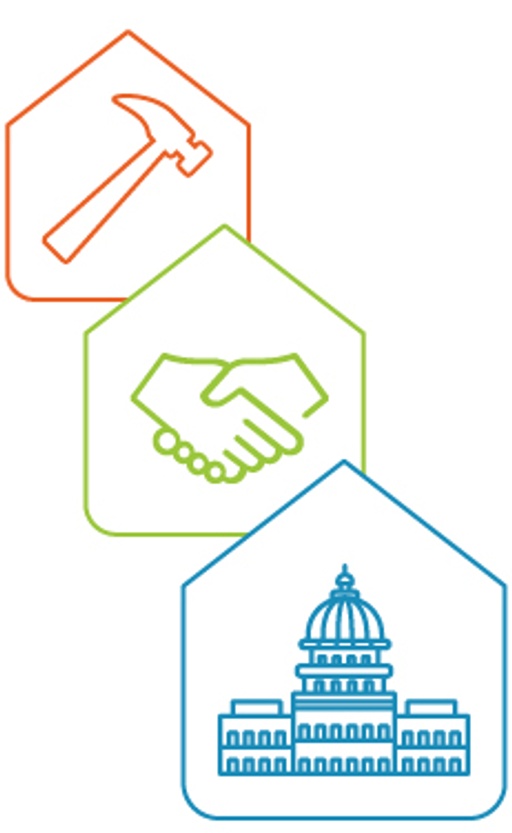
Building a Strategy for Problem Solving
May 14, 2019I recently had the pleasure of attending the biennial Habitat for Humanity Affiliate Conference in Atlanta and hearing Jonathan Reckford, CEO for Habitat for Humanity International, speak. Jonathan summarized Habitat's remarkable journey since its founding in 1976. As he spoke, it was easy to draw parallels between how his organization is addressing a global social problem and how many of our organizations work at solving problems on a smaller scale.
What is the problem that Habitat is working to solve? Quite simply, there are "1.6 billion people around the world who lack adequate shelter." Habitat's vision is a world where everyone has a decent place to live. It has evolved from a dream of building 100,000 houses to an organization helping over 22 million people improve their housing conditions in all the 50 states and 70 other countries.
The original model was pretty simple — acquire land that was either donated or bought cheaply and build a decent home. Help one family after another to turn their lives around. After the first five years, Habitat had built 342 houses. By 2000, the dream of building 100,000 houses had been achieved and by 2005, the organization celebrated its 200,000th house.
A tsunami in Asia, two hurricanes, and the 2008 mortgage crisis in the U.S., drove Habitat to expand its scope from building individual houses to rebuilding entire communities. At that time, Habitat measured its success by the number of Habitat organizations founded and the number of new houses constructed. These metrics showed impressive growth over the years. However, the organization strives to make an impact in the housing deficit in each geography served and the deficit was growing faster than Habitat was able to work. The statistics showed that 1 in every 4 people worldwide lacked adequate shelter. And startlingly, virtually nowhere in the U.S. could a fulltime employee working at minimum wage afford a one‐bedroom apartment. The needs created by these catastrophic events and general economic conditions spurred Habitat to expand beyond improving housing conditions to also acting as a catalyst for the improvement of living conditions in general.
Habitat developed a "three‐house plan" with interdependent strategies that build upon one another.
- House 1 — Build Community Impact: Improve Housing Conditions
- House 2 — Build Sector Impact: Partner to Increase Shelter Access
- House 3 — Build Societal Impact: Inspire Action to End Poverty Housing
These three houses are built on operating with excellence on a shared foundation of organizational best practices.
After listening to Jonathan Reckford call his organization to action, I left with a few takeaways to apply to my own problem solving back home.
- Move from measuring outputs to measuring outcomes and impact.Tracking metrics — such as number of houses built or renovated, donations and grants received, or training programs conducted — demonstrate great progress. However, those metrics do not sufficiently capture the impact that stable housing has on health, school attendance, graduation rates, employment, and reduced crime rates; all which ultimately lead to breaking the cycle of poverty. Do your metrics tell you if you're really solving the problem?
- Partner with others — problem solving is not a solo gig.Habitat's partnerships with financial service partners and government have increased products, services, and financing for affordable housing. They couldn't do it alone building one house at a time. Who do you know from other organizations who can lend expertise and resources?
- Inform people to inspire them to act.Raising awareness of the need for adequate, affordable housing is the first step to mobilize volunteers. People need to understand the problem, the need, and what they can do. What story are you sharing to inspire people to solve the problems at hand?
One other takeaway is more personal. Once trained in process improvement, you forever see the world's opportunities to improve. Whether it's how to save steps and load the dishwasher most efficiently or how to 5S the contents of your suitcase, you're always in problem‐solving mode. Why not apply those problem solving skills to help improve the logistics at a local food bank, or the processing of donations at a collection site or the scheduling of volunteers at a shelter? It's not a cliche to "make the world a better place" when you truly can contribute. What—don't try to solve world hunger? Why not?





